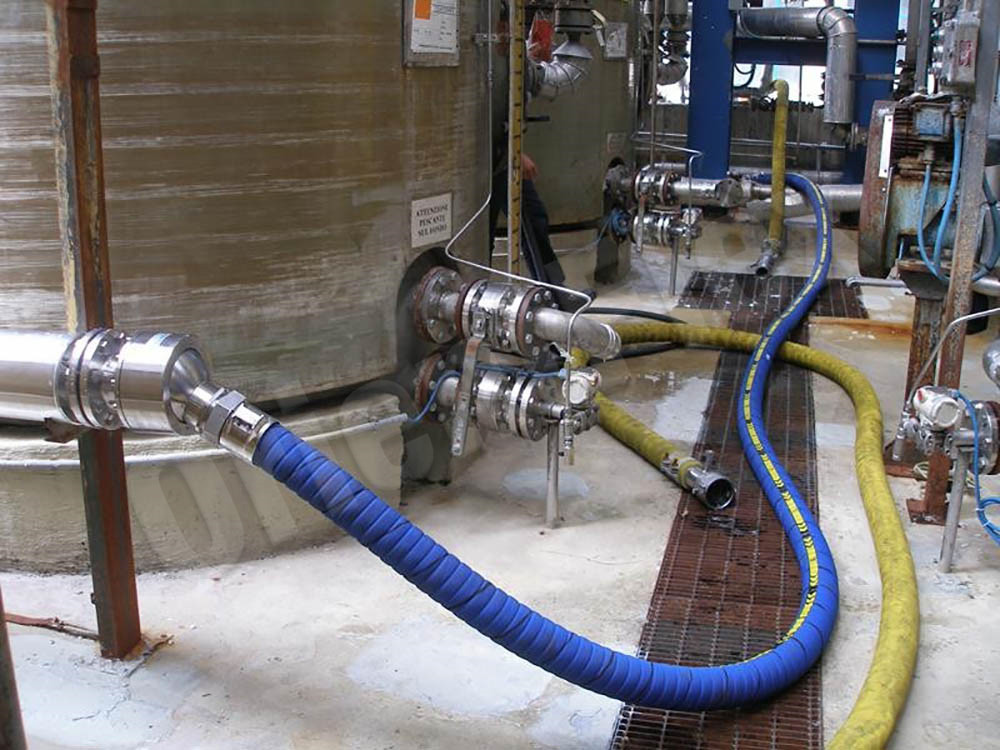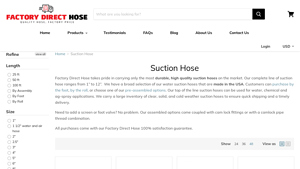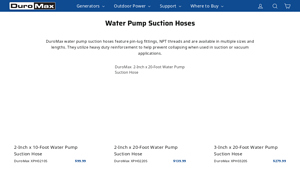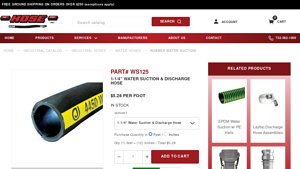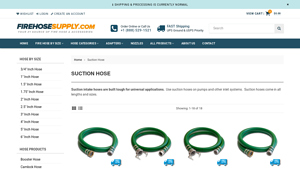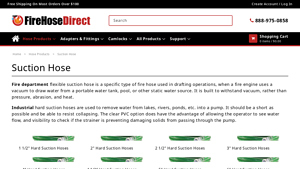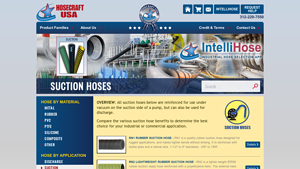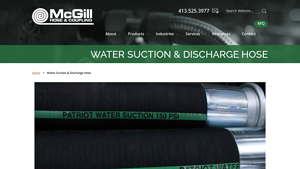Introdução: Navegando no mercado global de mangueiras de sucção
No cenário em rápida evolução do comércio global, o fornecimento de mangueiras de sucção de alta qualidade pode representar desafios significativos para os compradores B2B, especialmente em diversos mercados em África, na América do Sul, no Médio Oriente e na Europa. A necessidade de mangueiras de sucção fiáveis e versáteis - essenciais para aplicações que vão desde a irrigação agrícola à transferência de fluidos industriais - exige uma abordagem estratégica à seleção de fornecedores e às especificações do produto. Este guia abrangente analisa os vários tipos de mangueiras de sucção disponíveis, as suas aplicações específicas e os factores críticos a considerar na seleção de fornecedores.
Ao longo deste guia, iremos explorar os pormenores intrincados dos materiais das mangueiras de sucção, incluindo as opções de PVC e borracha, e as respectivas vantagens para diferentes ambientes, como o tempo frio ou a exposição a produtos químicos. Os compradores obterão informações sobre as estruturas de preços, garantindo que podem tomar decisões económicas sem comprometer a qualidade. Além disso, forneceremos conselhos práticos sobre a avaliação de fornecedores, incluindo indicadores-chave de desempenho e certificações que podem ajudar a reduzir os riscos associados às aquisições internacionais.
Ao aproveitar as informações apresentadas neste guia, os compradores internacionais B2B podem navegar com confiança pelas complexidades do mercado de mangueiras de sucção. Quer esteja na Nigéria, na Alemanha ou em qualquer outro país, o nosso objetivo é equipá-lo com os conhecimentos necessários para tomar decisões de compra informadas que se alinhem com as suas necessidades operacionais e objectivos de sustentabilidade.
Índice
- Lista dos 7 principais fabricantes e fornecedores de mangueiras de sucção
- Introdução: Navegando no mercado global de mangueiras de sucção
- Compreender os tipos e as variações dos tubos de aspiração
- Principais aplicações industriais dos tubos de aspiração
- 3 pontos de dor comuns dos utilizadores de "tubos de sucção" e respectivas soluções
- Guia estratégico de seleção de materiais para mangueiras de aspiração
- Análise aprofundada: Processos de fabrico e garantia de qualidade para tubos de aspiração
- Guia prático de abastecimento: Uma lista de verificação passo a passo para 'mangueiras de aspiração'
- Análise abrangente de custos e preços para mangueiras de sucção Sourcing
- Análise de alternativas: Comparação das mangueiras de aspiração com outras soluções
- Caraterísticas técnicas essenciais e terminologia comercial dos tubos de aspiração
- Navegar na dinâmica do mercado e nas tendências de abastecimento no sector das mangueiras de aspiração
- Perguntas mais frequentes (FAQs) para compradores B2B de tubos de sucção
- Conclusão sobre o aprovisionamento estratégico e perspectivas para os tubos de aspiração
- Aviso importante e termos de utilização
Compreender os tipos e as variações dos tubos de aspiração
| Tipo Nome | Principais caraterísticas distintivas | Aplicações B2B primárias | Breves prós e contras para os compradores |
|---|---|---|---|
| Mangueira de sucção em PVC | Leve, flexível, disponível em PVC transparente ou colorido | Transferência de água, pulverização agrícola | Prós: Económico e com boa visibilidade; Contras: Resistência limitada à temperatura. |
| Mangueira de sucção de borracha | Duradoura, com elevada resistência à abrasão, adequada para uma utilização robusta | Aplicações industriais, construção | Prós: Excelente durabilidade, resiste a condições adversas; Contras: Mais pesado e menos flexível. |
| Mangueira de sucção para tempo frio | Concebida para manter a flexibilidade a baixas temperaturas | Construção de inverno, zonas de clima frio | Prós: Mantém o desempenho em condições de congelação; Contras: Custo mais elevado em comparação com as mangueiras normais. |
| Mangueira de aspiração reforçada | Camadas adicionadas para maior força e resistência à pressão | Transferência de produtos químicos, aplicações pesadas | Prós: Capacidade de alta pressão, resistente a dobras; Contras: Mais caro e potencialmente mais volumoso. |
| Mangueira de sucção em PVC transparente | O material transparente permite a monitorização visual do caudal | Transformação de alimentos, aquacultura | Prós: Monitorização fácil do caudal, leve; Contras: Mais suscetível à degradação por UV. |
Quais são as caraterísticas e a adequação das mangueiras de sucção em PVC?
As mangueiras de sucção em PVC são populares em várias indústrias devido ao seu design leve e flexível. Normalmente disponíveis em variantes transparentes e coloridas, estas mangueiras são ideais para aplicações como a transferência de água e a pulverização agrícola. Ao comprar mangueiras de PVC, os compradores B2B devem considerar factores como a classificação de pressão da mangueira, bem como a sua resistência a produtos químicos e à exposição aos raios UV. Embora ofereçam uma excelente visibilidade para monitorizar o fluxo, a sua resistência à temperatura pode ser limitada, tornando-as menos adequadas para condições extremas.
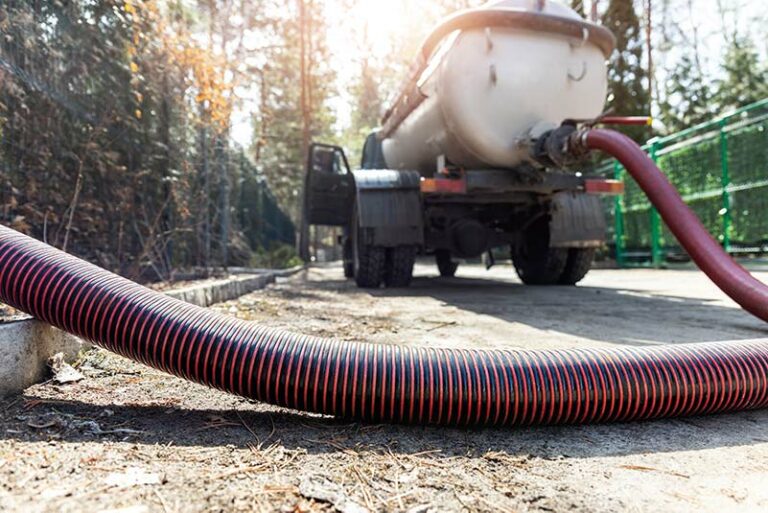
Imagem ilustrativa relacionada com os tubos de aspiração
Porquê escolher mangueiras de sucção de borracha para aplicações industriais?
As mangueiras de sucção de borracha são concebidas para aplicações pesadas, o que as torna ideais para indústrias como a construção e a indústria transformadora. A sua construção robusta proporciona uma excelente resistência à abrasão, permitindo-lhes suportar ambientes difíceis. Os compradores devem avaliar os requisitos específicos das suas aplicações, incluindo as classificações de pressão e temperatura, ao selecionar mangueiras de borracha. Embora sejam mais duráveis do que as opções de PVC, as mangueiras de borracha podem ser mais pesadas e menos flexíveis, o que pode afetar o manuseamento e a instalação.
Qual o desempenho das mangueiras de sucção para clima frio em baixas temperaturas?
As mangueiras de sucção para tempo frio são projectadas para permanecerem flexíveis e funcionais em condições de congelamento, tornando-as essenciais para a construção no inverno e outras aplicações em climas frios. Estas mangueiras incorporam frequentemente materiais especializados que evitam a fragilidade, garantindo um desempenho fiável. Os compradores B2B devem ponderar as vantagens de um melhor desempenho em condições de frio em relação ao preço tipicamente mais elevado destas mangueiras. Compreender as condições ambientais específicas em que as mangueiras serão utilizadas é crucial para efetuar uma compra informada.
Que vantagens oferecem as mangueiras de sucção reforçadas?
As mangueiras de sucção reforçadas apresentam camadas adicionais que aumentam a sua força e resistência à pressão, tornando-as adequadas para aplicações exigentes, como a transferência de produtos químicos e tarefas pesadas. Os compradores devem considerar as pressões operacionais e os tipos de materiais transportados ao selecionar mangueiras reforçadas. Embora ofereçam excelente durabilidade e resistência a dobras, estas mangueiras podem ser mais volumosas e mais caras do que as opções padrão, o que pode afetar a logística e a eficiência de custos.
Porquê optar por mangueiras de sucção em PVC transparente no processamento de alimentos?
As mangueiras de sucção em PVC transparente são particularmente vantajosas em aplicações como o processamento de alimentos e a aquacultura, onde a monitorização visual do fluxo é essencial. O seu design transparente permite aos utilizadores detetar facilmente quaisquer bloqueios ou contaminantes. Ao comprar mangueiras transparentes, os compradores B2B devem considerar factores como a conformidade da mangueira com as normas de segurança alimentar e a sua resistência à degradação por UV. Embora ofereçam vantagens significativas em termos de visibilidade e manuseamento leve, a sua suscetibilidade à exposição aos raios UV pode limitar a sua utilização no exterior.
Principais aplicações industriais dos tubos de aspiração
| Indústria/Setor | Aplicação específica de tubos de aspiração | Valor/benefício para a empresa | Principais considerações de fornecimento para esta aplicação |
|---|---|---|---|
| Agricultura | Sistemas de irrigação para transferência de água | Uma gestão eficiente da água aumenta o rendimento das culturas | Durabilidade em condições climatéricas variadas, opções de comprimento |
| Construção e exploração mineira | Remoção de lamas e detritos dos locais de trabalho | Mantém a limpeza e a segurança do local | Resistência à abrasão e aos produtos químicos, flexibilidade |
| Gestão de resíduos | Bombagem de resíduos líquidos e de fossas sépticas | Assegura a eliminação eficaz dos resíduos | Conformidade com os regulamentos ambientais, diâmetro da mangueira |
| Processamento químico | Transferência de produtos químicos e líquidos | Minimiza a contaminação e a perda | Compatibilidade de materiais, classificações de pressão |
| Alimentação e bebidas | Transferência de produtos alimentares líquidos | Assegura a higiene e a segurança na transformação dos géneros alimentícios | Conformidade com a FDA, resistência à temperatura |
Como é que as mangueiras de sucção são utilizadas na agricultura para sistemas de irrigação?
No sector agrícola, as mangueiras de sucção são cruciais para a transferência de água de fontes como rios ou poços para sistemas de irrigação. Permitem uma gestão eficiente da água, o que é vital para aumentar o rendimento das culturas, especialmente em regiões que enfrentam escassez de água. Os compradores em África e na América do Sul devem dar prioridade a mangueiras que resistam a condições climatéricas extremas e que estejam disponíveis em vários comprimentos para se adaptarem às suas configurações de irrigação específicas.
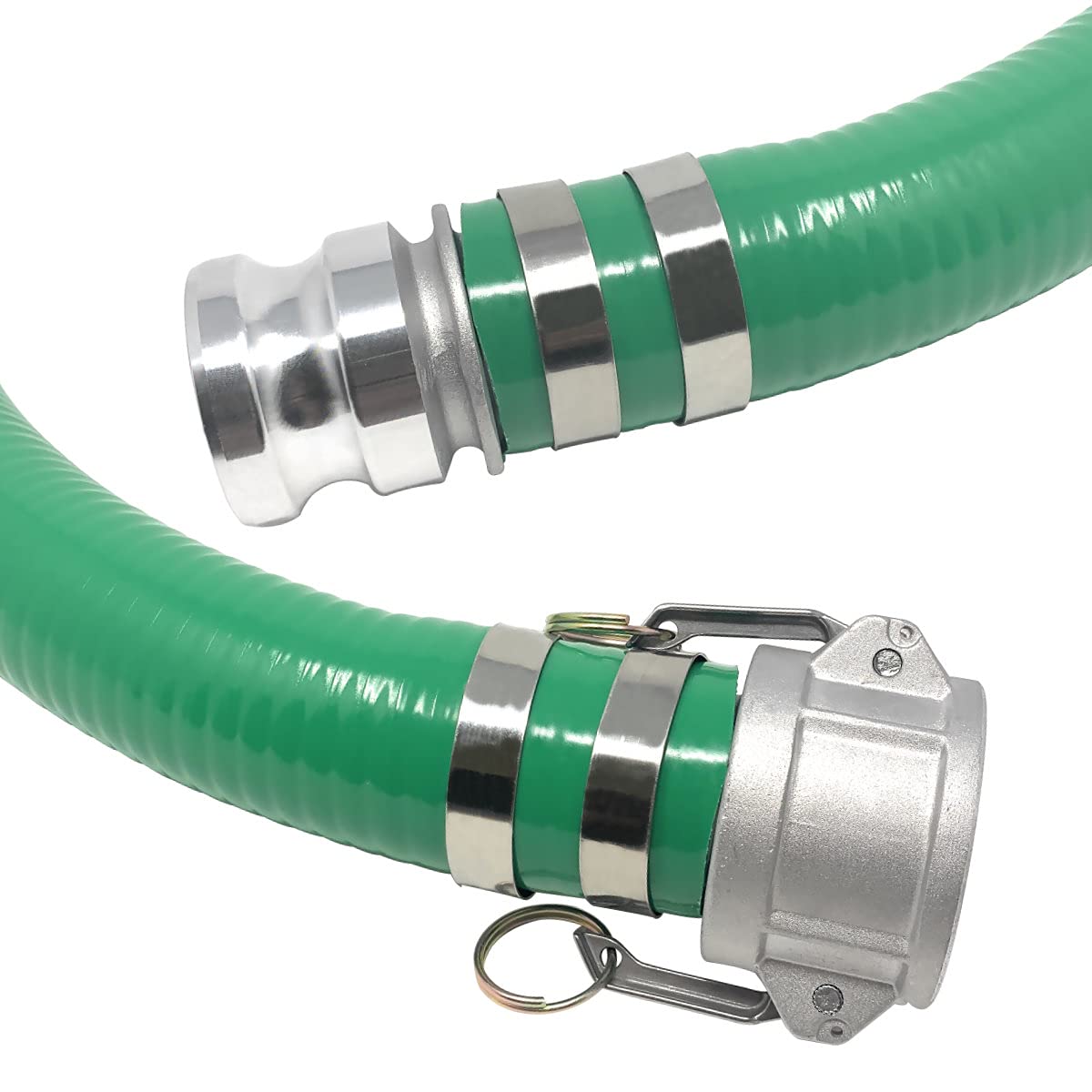
Imagem ilustrativa relacionada com os tubos de aspiração
Qual é o papel das mangueiras de sucção na construção e na mineração?
Na construção e na exploração mineira, as mangueiras de aspiração são utilizadas para remover lamas, detritos e outros materiais dos locais de trabalho. Esta aplicação é essencial para manter um ambiente de trabalho limpo e seguro, reduzindo o risco de acidentes e atrasos. Os compradores devem considerar mangueiras resistentes à abrasão e a produtos químicos, bem como aquelas que oferecem flexibilidade para manobrar em torno de equipamentos de construção.
Como são utilizadas as mangueiras de sucção na gestão de resíduos?
As mangueiras de sucção são parte integrante da gestão de resíduos líquidos, particularmente para a bombagem de fossas sépticas e outras aplicações de eliminação de resíduos. Asseguram a transferência efectiva de resíduos, minimizando o risco de derrames e de contaminação ambiental. As empresas do Médio Oriente e da Europa devem garantir a conformidade com os regulamentos ambientais locais quando adquirem estas mangueiras, prestando especial atenção ao diâmetro da mangueira e às especificações do material.
De que forma as mangueiras de sucção são utilizadas no processamento químico?
Na indústria de processamento de produtos químicos, as mangueiras de sucção facilitam a transferência segura de vários produtos químicos e líquidos. Esta aplicação é fundamental para minimizar a contaminação e a perda durante o transporte. Os compradores internacionais, em particular da Europa e de África, devem concentrar-se no fornecimento de mangueiras compatíveis com os produtos químicos específicos que estão a ser manuseados e que cumprem as classificações de pressão rigorosas para garantir a segurança e a eficiência.
Como é que as mangueiras de sucção contribuem para o processamento de alimentos e bebidas?
As mangueiras de aspiração são essenciais na indústria alimentar e de bebidas para a transferência de produtos alimentares líquidos. Desempenham um papel vital na garantia da higiene e segurança durante o processamento de alimentos, o que é fundamental para manter a qualidade do produto. Os compradores devem procurar mangueiras que cumpram os regulamentos da FDA e possuam resistência à temperatura para se adaptarem a vários ambientes de processamento de alimentos, garantindo que cumprem as normas da indústria.
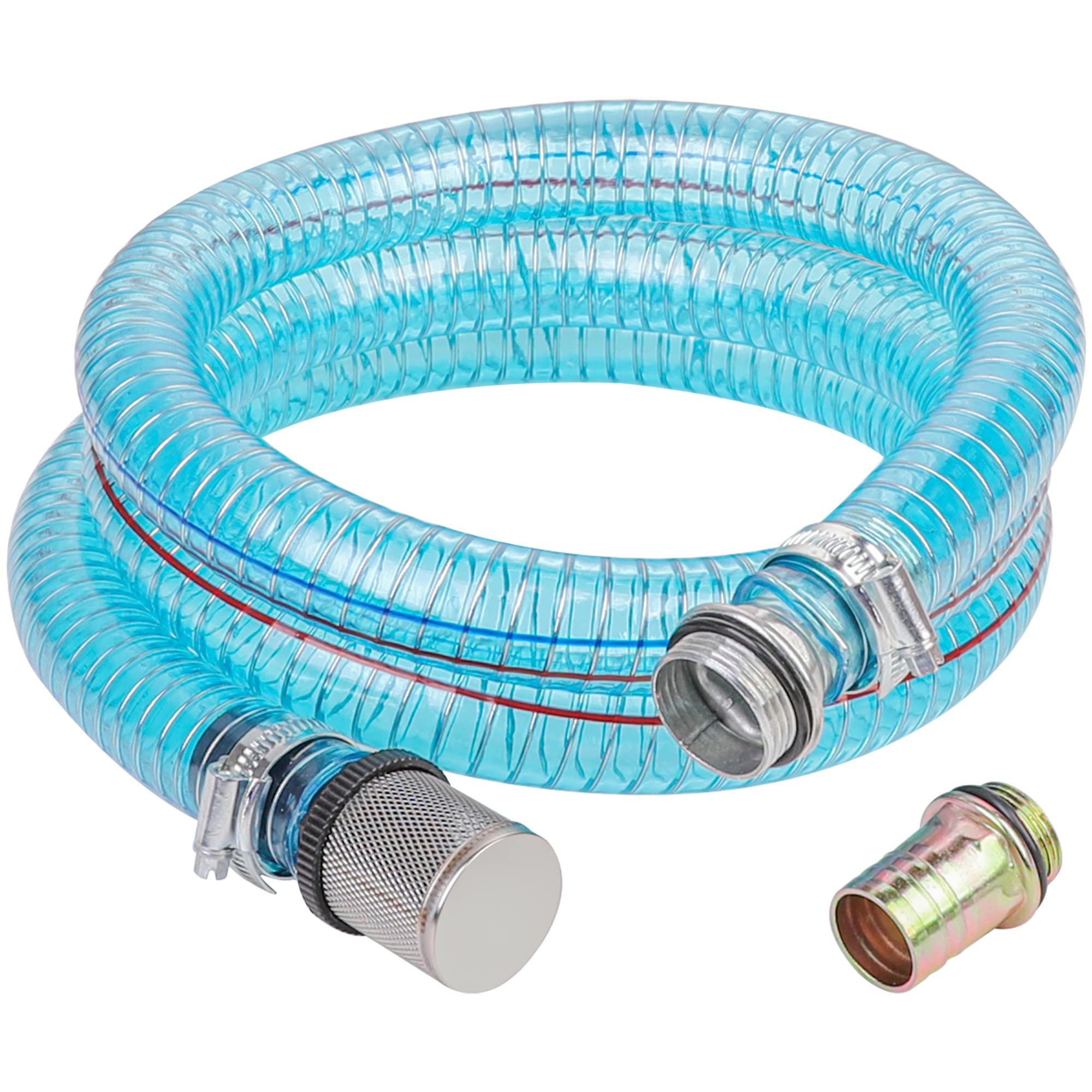
Imagem ilustrativa relacionada com os tubos de aspiração
3 pontos de dor comuns dos utilizadores de "tubos de sucção" e respectivas soluções
Cenário 1: caudais inconsistentes durante as operações
O problema: Os compradores B2B têm frequentemente caudais inconsistentes quando utilizam mangueiras de aspiração, o que pode levar a ineficiências operacionais e a um aumento dos custos. Esta inconsistência pode ter origem em vários factores, tais como incompatibilidades no diâmetro da mangueira, dobras na mangueira ou acessórios inadequados que perturbam o fluxo. Estes problemas podem afetar particularmente indústrias como a agricultura e a construção, onde a transferência precisa de fluidos é fundamental para a produtividade.
A solução: Para garantir taxas de fluxo consistentes, é crucial selecionar o diâmetro correto da mangueira para a aplicação. Os compradores devem calcular o caudal e a pressão necessários para escolher uma mangueira que possa acomodar estas necessidades sem restrições desnecessárias. Além disso, o investimento em acessórios de alta qualidade e a garantia de que estão corretamente fixados podem atenuar as interrupções do fluxo. A manutenção regular, incluindo a verificação de dobras ou danos na mangueira, ajudará a manter um desempenho ótimo. Também se deve ter em consideração o material da mangueira de aspiração; por exemplo, as mangueiras de borracha podem suportar melhor pressões mais elevadas e condições mais adversas do que as mangueiras de PVC. Consulte sempre os fornecedores para confirmar a compatibilidade com os sistemas existentes e para explorar opções de comprimentos personalizados que se adaptem a necessidades operacionais específicas.
Cenário 2: Condições ambientais que afectam o desempenho da mangueira
O problema: As mangueiras de aspiração podem ser significativamente afectadas pelas condições ambientais, particularmente em regiões com temperaturas extremas ou substâncias corrosivas. Para as empresas que operam em locais como o Médio Oriente ou o Norte da Europa, a utilização de mangueiras normais pode levar a um desgaste prematuro, a falhas ou mesmo a riscos de segurança. Isto não só perturba as operações, como também leva a custos adicionais em reparações ou substituições.
A solução: Para combater os desafios ambientais, os compradores devem selecionar mangueiras especificamente concebidas para as suas condições de funcionamento. Por exemplo, as mangueiras de sucção para climas frios que mantêm a flexibilidade a baixas temperaturas podem evitar fissuras e garantir um desempenho fiável. Da mesma forma, as mangueiras feitas de materiais resistentes a produtos químicos são essenciais para as indústrias que lidam com substâncias corrosivas. Ao adquirir mangueiras de sucção, é aconselhável solicitar folhas de dados que descrevam a compatibilidade química e de temperatura. Além disso, a implementação de um programa de inspeção de rotina pode ajudar a identificar o desgaste antes que este conduza a uma falha, permitindo que as empresas substituam as mangueiras de forma proactiva e não reactiva.
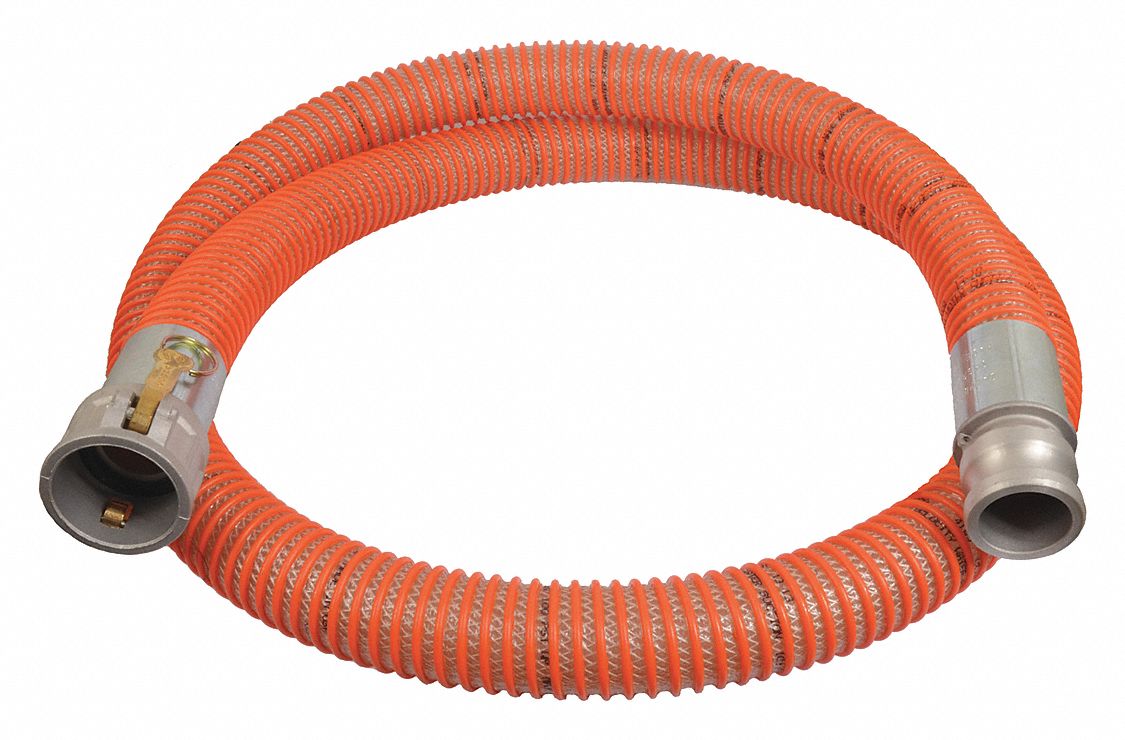
Imagem ilustrativa relacionada com os tubos de aspiração
Cenário 3: Dificuldade em obter o comprimento correto da mangueira
O problema: O aprovisionamento de mangueiras de sucção com os comprimentos corretos pode ser um ponto de dificuldade significativo para os compradores B2B, especialmente quando os projectos exigem comprimentos personalizados que não estão prontamente disponíveis no inventário padrão. Este problema pode levar a atrasos nos prazos dos projectos e a um aumento dos custos devido à compra de material em excesso para as mangueiras que pode não ser necessário.
A solução: Os compradores devem trabalhar com fornecedores que ofereçam mangueiras com comprimentos personalizáveis ou que ofereçam a opção de comprar mangueiras ao pé. Esta flexibilidade permite que as empresas encomendem apenas o que é necessário para as suas aplicações específicas, minimizando o desperdício e poupando custos. Ao efetuar encomendas, é vantajoso fornecer especificações detalhadas sobre os requisitos do projeto, incluindo o comprimento, o diâmetro e o tipo de material. O estabelecimento de uma relação sólida com um fornecedor fiável também pode garantir tempos de resposta mais rápidos para encomendas personalizadas e facilitar a aquisição de mangueiras que satisfaçam as exigências específicas do projeto. Além disso, considerar sistemas de mangueiras modulares que possam ser facilmente ajustados no local pode aumentar ainda mais a eficiência operacional e a adaptabilidade.
Guia estratégico de seleção de materiais para mangueiras de aspiração
Quais são as principais propriedades dos materiais comuns utilizados nas mangueiras de sucção?
Ao selecionar mangueiras de sucção para várias aplicações, é crucial compreender as propriedades do material. Os materiais mais comuns incluem PVC, borracha, poliuretano e polietileno. Cada material oferece vantagens e limitações únicas que podem afetar significativamente o desempenho, a durabilidade e o custo.
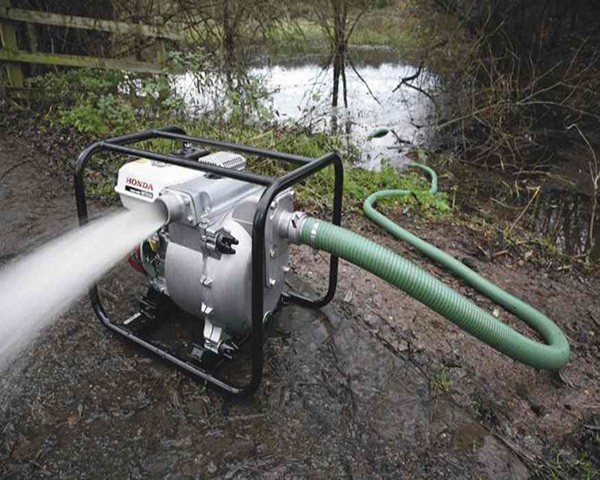
Imagem ilustrativa relacionada com os tubos de aspiração
Qual o desempenho do PVC em aplicações de mangueiras de sucção?
O PVC (cloreto de polivinilo) é amplamente utilizado para mangueiras de aspiração devido à sua natureza leve e flexibilidade. Normalmente, tem uma classificação de temperatura de até 60°C (140°F) e pode suportar pressões que variam de 20 a 60 psi, dependendo da espessura. O PVC também é resistente a muitos produtos químicos, o que o torna adequado para aplicações de água e produtos químicos ligeiros.
Prós: As mangueiras de PVC são económicas e fáceis de fabricar, permitindo uma produção e entrega rápidas. Também estão disponíveis em várias cores e opções de transparência, o que pode ser benéfico para monitorizar o fluxo de fluidos.
Contras: Embora o PVC seja durável para muitas aplicações, pode tornar-se quebradiço em temperaturas extremas e pode não ser adequado para utilização industrial pesada. Para além disso, a exposição aos raios UV pode degradar o PVC ao longo do tempo.
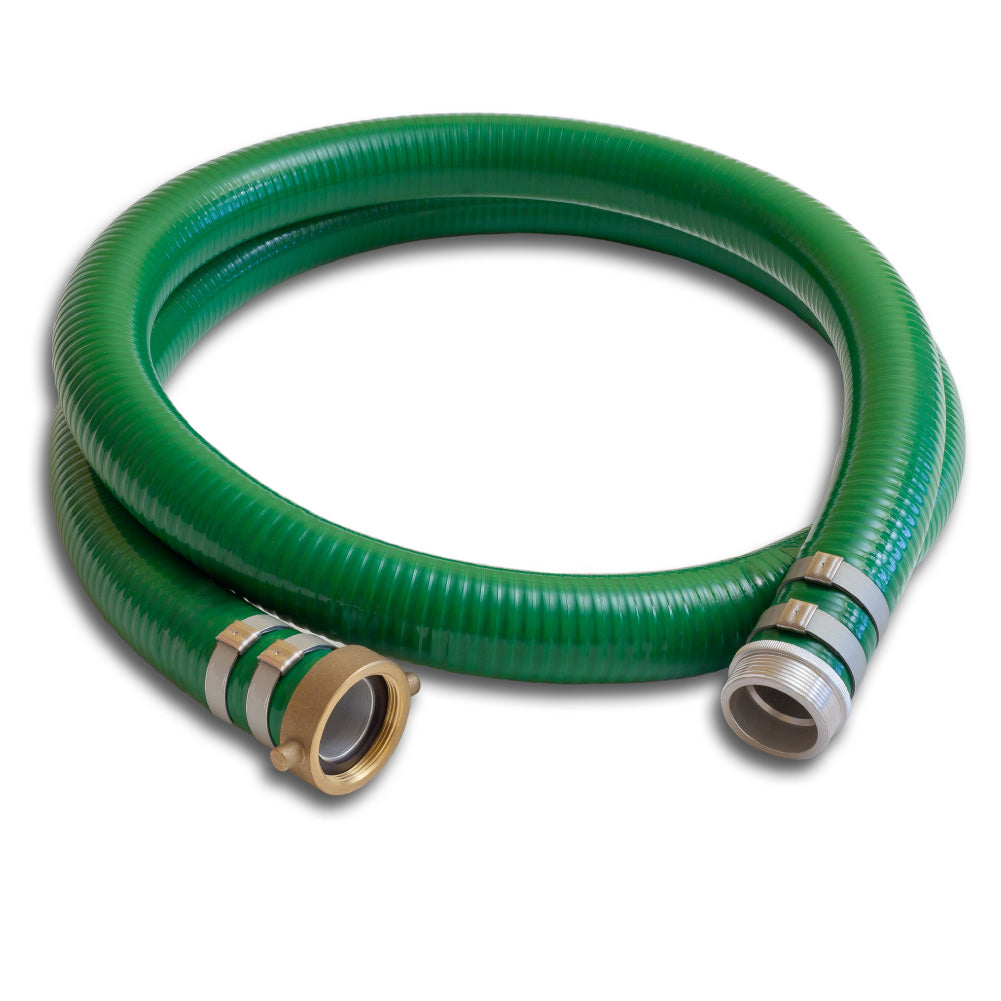
Imagem ilustrativa relacionada com os tubos de aspiração
Impacto na aplicação: O PVC é compatível com água, produtos químicos ligeiros e pulverizações agrícolas, o que o torna ideal para aplicações agrícolas e de construção.
Considerações para compradores internacionais: Os compradores de regiões como África e América do Sul devem certificar-se de que as mangueiras de PVC cumprem as normas de conformidade locais, como ASTM ou DIN, especialmente no que diz respeito à compatibilidade química.
Quais são as vantagens da utilização de borracha nos tubos de aspiração?
As mangueiras de borracha são conhecidas pela sua durabilidade e flexibilidade excepcionais. Podem suportar temperaturas que variam entre -40°C e 93°C (-40°F e 200°F) e pressões até 150 psi, o que as torna adequadas para aplicações pesadas.
Prós: A borracha é altamente resistente à abrasão, à exposição aos raios UV e a vários produtos químicos, o que a torna ideal para ambientes industriais. A sua flexibilidade permite uma fácil manobrabilidade em espaços apertados.
Contras: As mangueiras de borracha tendem a ser mais caras do que as de PVC e podem exigir processos de fabrico mais complexos. Além disso, podem ser mais pesadas, o que pode afetar o seu manuseamento.
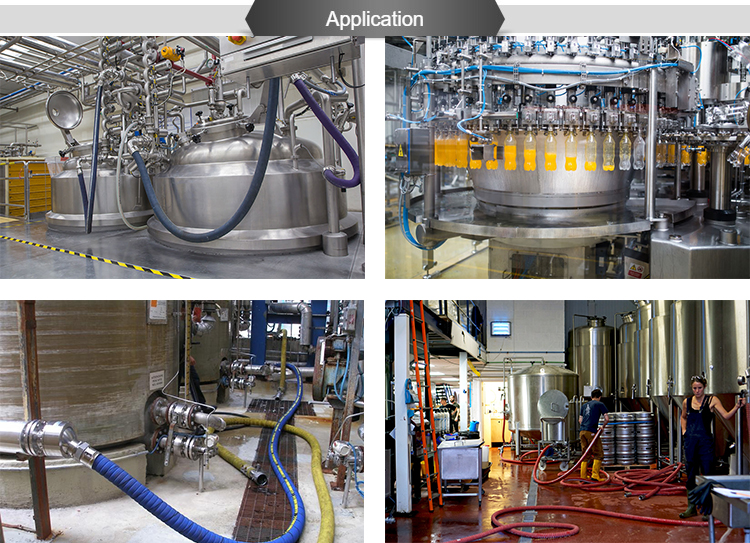
Imagem ilustrativa relacionada com os tubos de aspiração
Impacto na aplicação: As mangueiras de borracha são adequadas para o transporte de água, produtos químicos e até materiais abrasivos, o que as torna versáteis para várias indústrias.
Considerações para compradores internacionais: Os compradores devem verificar a conformidade com as normas internacionais, especialmente em regiões com regulamentos rigorosos sobre a segurança dos materiais e o impacto ambiental.
Qual é a comparação do poliuretano para mangueiras de sucção?
As mangueiras de poliuretano oferecem um equilíbrio entre flexibilidade e durabilidade, com classificações de temperatura que normalmente variam de -40°C a 82°C (-40°F a 180°F) e classificações de pressão de até 150 psi.
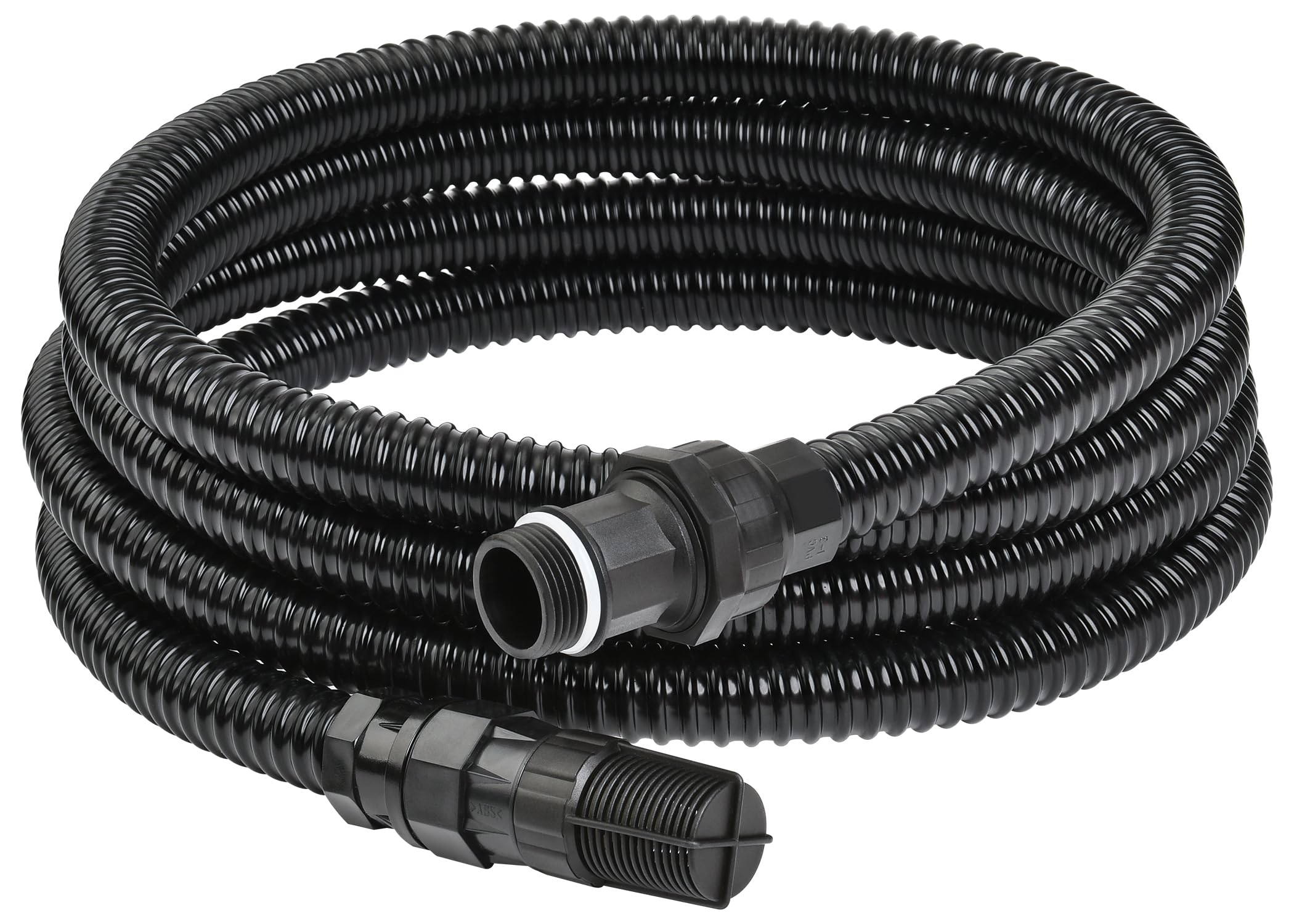
Imagem ilustrativa relacionada com os tubos de aspiração
Prós: O poliuretano é resistente à abrasão, a perfurações e a produtos químicos, o que o torna uma escolha robusta para aplicações exigentes. A sua natureza leve também facilita o manuseamento e a instalação.
Contras: Embora as mangueiras de poliuretano sejam duráveis, podem ser mais caras do que as de PVC e borracha. Podem também exigir acessórios especializados, o que pode complicar a montagem.
Impacto na aplicação: Estas mangueiras são particularmente eficazes em aplicações que requerem elevada flexibilidade e resistência ao desgaste, como na construção e na exploração mineira.
Considerações para compradores internacionais: Os compradores devem certificar-se de que as mangueiras de poliuretano cumprem as normas e regulamentos locais, nomeadamente em termos de resistência química e segurança.
Quais são as vantagens de utilizar polietileno para mangueiras de aspiração?
O polietileno é outro material comum para mangueiras de sucção, particularmente em aplicações agrícolas e de transferência de água. Normalmente, tem uma classificação de temperatura de até 49°C (120°F) e pode suportar pressões de cerca de 30 psi.
Prós: As mangueiras de polietileno são leves e resistentes à corrosão e aos produtos químicos, o que as torna adequadas para várias aplicações. São também geralmente menos dispendiosas do que a borracha e o poliuretano.
Contras: No entanto, o polietileno é menos flexível do que a borracha e pode não ser adequado para aplicações de alta pressão. A sua resistência à luz UV também é limitada, o que pode levar à degradação ao longo do tempo.
Impacto na aplicação: O polietileno é ideal para a transferência de água e para aplicações químicas ligeiras, especialmente em ambientes agrícolas.
Considerações para compradores internacionais: Os compradores devem verificar se as mangueiras de polietileno cumprem as normas internacionais relevantes em matéria de segurança e desempenho, especialmente em regiões com climas diversos.
Tabela de resumo da seleção de materiais para mangueiras de aspiração
| Material | Caso de utilização típico para tubos de aspiração | Vantagem chave | Principal desvantagem/limitação | Custo relativo (baixo/médio/alto) |
|---|---|---|---|---|
| PVC | Água, produtos químicos leves | Económica e flexível | Frágil a temperaturas extremas | Baixa |
| Borracha | Aplicações industriais pesadas | Altamente durável e flexível | Mais caro e mais pesado | Elevado |
| Poliuretano | Construção e exploração mineira | Resistente à abrasão e leve | Custo mais elevado e acessórios especializados | Med |
| Polietileno | Transferência de água, agricultura | Leve e resistente à corrosão | Menos flexível e sensível aos raios UV | Baixa |
Análise aprofundada: Processos de fabrico e garantia de qualidade para tubos de aspiração
Quais são as principais fases de fabrico dos tubos de aspiração?
O processo de fabrico de tubos de sucção envolve várias fases críticas que garantem que o produto final cumpre as normas da indústria e as expectativas dos clientes. A compreensão destas fases pode ajudar os compradores B2B a tomar decisões informadas ao selecionar os fornecedores.
1. Preparação do material
O primeiro passo no processo de fabrico é a preparação do material. As mangueiras de sucção são normalmente feitas de vários materiais, incluindo PVC, borracha e elastómeros termoplásticos. A seleção do material depende da aplicação específica, como a resistência química ou a flexibilidade da temperatura.
Nesta fase, as matérias-primas são adquiridas e testadas quanto à sua qualidade. Isto pode incluir a verificação das propriedades físicas, como a resistência à tração e a elasticidade. Os fornecedores efectuam frequentemente testes de lotes para garantir a consistência da qualidade do material.
2. Formação
Uma vez que os materiais são preparados, eles passam pelo processo de formação. Este processo pode envolver extrusão, moldagem ou entrançamento, dependendo do tipo de mangueira que está a ser fabricada.
-
Extrusão: Para as mangueiras de PVC, o material é aquecido e forçado através de um molde para criar a forma desejada da mangueira. Este método permite uma produção contínua e uma espessura uniforme.
-
Moldagem: As mangueiras de borracha podem ser produzidas utilizando técnicas de moldagem por compressão ou injeção. Estes métodos garantem que as mangueiras tenham a durabilidade e a flexibilidade necessárias.
-
Trança: Em certos casos, o reforço através de entrançamento é aplicado para aumentar a resistência. Isto é particularmente importante para os tubos que têm de suportar pressões elevadas ou materiais abrasivos.
3. Montagem
Depois de formadas, as mangueiras são cortadas nos comprimentos necessários e equipadas com os conectores ou acessórios adequados. Este processo de montagem pode incluir a adição de acessórios de bloqueio de came, braçadeiras de mangueira ou outros acessórios necessários.
Os fornecedores oferecem frequentemente opções pré-montadas para satisfazer as necessidades específicas dos clientes, o que pode simplificar o processo de aquisição para os compradores B2B.
4. Acabamento
A fase final envolve processos de acabamento, como tratamento de superfície, etiquetagem e embalagem. A superfície da mangueira pode ser tratada para aumentar a resistência química ou a proteção UV.
O controlo de qualidade durante esta fase garante que as mangueiras estão isentas de defeitos e cumprem as especificações do cliente. A embalagem adequada é crucial para proteger as mangueiras durante o transporte e o armazenamento.
Como é que a garantia de qualidade é integrada no fabrico de tubos de sucção?
A garantia de qualidade (QA) é um aspeto vital do processo de fabrico, assegurando que os tubos de sucção cumprem as normas internacionais e os requisitos dos clientes.
Normas internacionais relevantes para mangueiras de aspiração
Os compradores B2B devem familiarizar-se com as normas de qualidade internacionais que regem o fabrico de tubos de sucção. As principais normas incluem:
-
ISO 9001: Esta norma define os requisitos para um sistema de gestão da qualidade (SGQ), assegurando que os fabricantes produzem consistentemente produtos de qualidade e aumentam a satisfação do cliente.
-
Marcação CE: Para os produtos vendidos no mercado europeu, a marcação CE indica a conformidade com as normas de saúde, segurança e proteção ambiental.
-
Normas API: O American Petroleum Institute (API) fornece diretrizes específicas para as mangueiras utilizadas na indústria do petróleo e do gás, assegurando que podem resistir a ambientes agressivos.
Quais são os principais pontos de verificação do controlo de qualidade no fabrico de mangueiras de sucção?
Os pontos de controlo de qualidade são essenciais para manter a integridade do produto ao longo do processo de fabrico. Estes pontos de controlo incluem:
Controlo de qualidade de entrada (IQC)
Na fase de preparação dos materiais, o controlo de qualidade à chegada verifica se as matérias-primas cumprem as especificações. Isto garante que apenas materiais de alta qualidade passem para as fases seguintes da produção.
Controlo de qualidade durante o processo (IPQC)
Durante as fases de conformação e montagem, o controlo de qualidade durante o processo monitoriza os parâmetros de fabrico. Isto inclui a verificação das dimensões, da espessura do material e da integridade dos acessórios. As inspecções regulares ajudam a identificar problemas precocemente, reduzindo o desperdício e o retrabalho.
Controlo de qualidade final (FQC)
Uma vez concluídas as mangueiras, o controlo de qualidade final envolve uma inspeção minuciosa do produto acabado. Isto pode incluir:
- Inspeção visual: Controlo dos defeitos ou irregularidades da superfície.
- Testes funcionais: Avaliação do desempenho do tubo flexível sob pressão ou em aplicações específicas.
- Ensaios dimensionais: Assegurar que a mangueira cumpre as medidas especificadas.
Como podem os compradores B2B verificar as práticas de controlo de qualidade dos fornecedores?
Os compradores B2B devem tomar medidas proactivas para verificar as práticas de controlo de qualidade dos potenciais fornecedores. Eis algumas estratégias eficazes:
Realização de auditorias a fornecedores
As auditorias regulares aos fornecedores podem fornecer informações sobre os seus processos de fabrico e práticas de garantia de qualidade. Os compradores devem avaliar se os fornecedores aderem a normas internacionais como a ISO 9001 e verificar a sua conformidade com a regulamentação específica do sector.
Pedido de relatórios de qualidade
Os fornecedores devem estar dispostos a partilhar relatórios de controlo de qualidade e certificações. Estes documentos fornecem provas de adesão às normas e os resultados dos testes efectuados durante o fabrico.
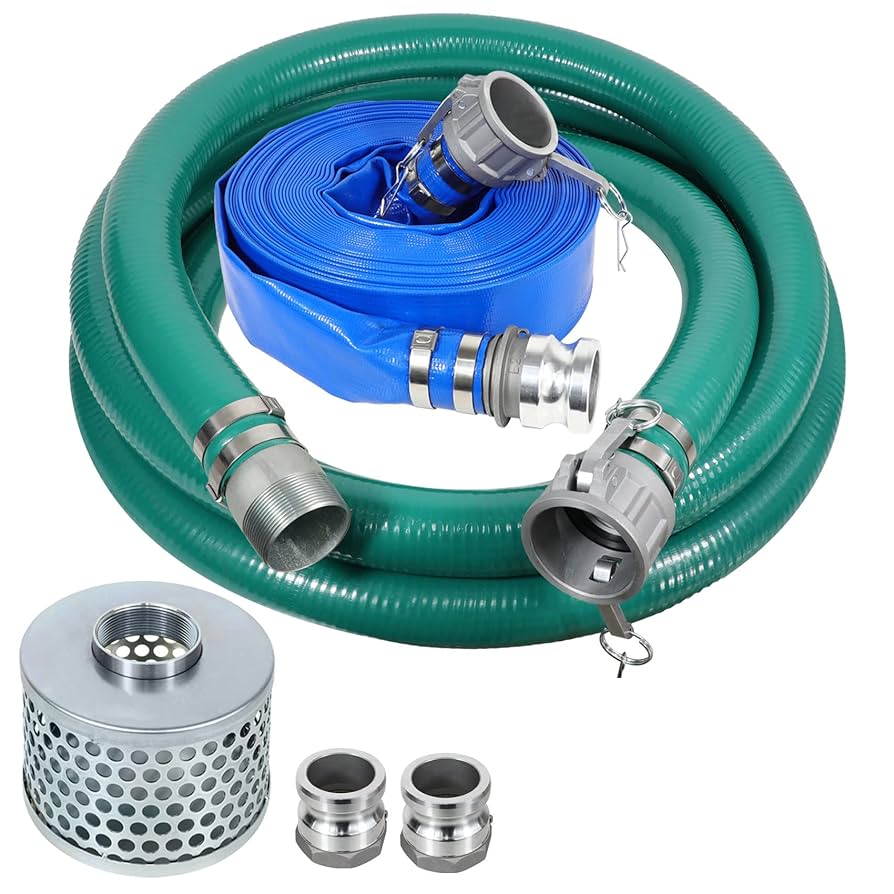
Imagem ilustrativa relacionada com os tubos de aspiração
Utilização de serviços de inspeção de terceiros
A contratação de serviços de inspeção por terceiros pode validar ainda mais a qualidade dos produtos antes da expedição. Estas inspecções independentes garantem que as mangueiras cumprem os requisitos especificados e estão isentas de defeitos.
Quais são as considerações de CQ para compradores B2B internacionais de diferentes regiões?
Os compradores B2B internacionais, particularmente os de regiões como África, América do Sul, Médio Oriente e Europa, devem estar cientes das nuances específicas do controlo de qualidade:
Normas regionais e conformidade
As diferentes regiões podem ter requisitos diferentes para as mangueiras de aspiração. Por exemplo, os compradores na Europa têm de garantir a conformidade com a marcação CE, enquanto os do Médio Oriente podem ter de considerar os regulamentos locais. Compreender estas nuances é crucial para uma aquisição bem sucedida.
Considerações sobre logística e transporte
A garantia de qualidade também se estende à logística e ao transporte de mangueiras de sucção. Os compradores devem verificar se os fornecedores adoptam medidas de qualidade para o transporte, incluindo uma embalagem adequada para evitar danos durante o transporte.
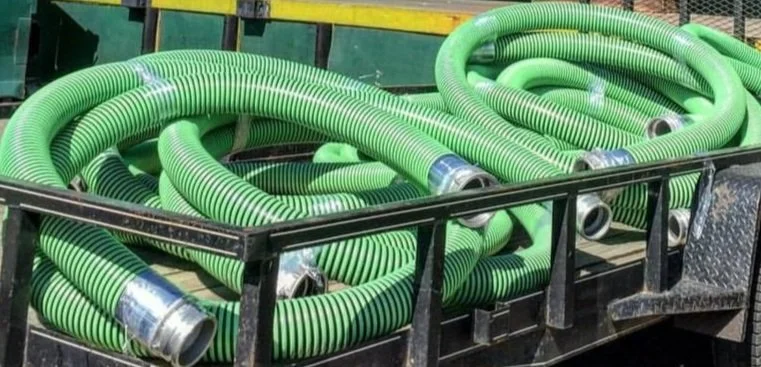
Imagem ilustrativa relacionada com os tubos de aspiração
Ao compreender os processos de fabrico e as medidas de garantia de qualidade envolvidas na produção de mangueiras de aspiração, os compradores B2B podem tomar decisões informadas, assegurando que adquirem produtos de alta qualidade que satisfazem as suas necessidades específicas.
Guia prático de abastecimento: Uma lista de verificação passo a passo para 'mangueiras de aspiração'
Para ajudar os compradores B2B a adquirir com êxito mangueiras de sucção, este guia fornece uma lista de verificação estruturada que descreve os passos essenciais no processo de aprovisionamento. Ao seguir estes passos, pode garantir que seleciona produtos de alta qualidade que satisfazem as suas necessidades operacionais, ao mesmo tempo que estabelece relações fiáveis com os fornecedores.
Passo 1: Definir as suas especificações técnicas
O estabelecimento de especificações técnicas claras é a base de um aprovisionamento eficaz. Considere factores como o diâmetro e o comprimento da mangueira, o material (PVC, borracha) e a pressão de funcionamento. A compreensão dos seus requisitos ajudá-lo-á a evitar erros dispendiosos e a garantir que as mangueiras selecionadas são adequadas às suas aplicações específicas, quer envolvam água, produtos químicos ou utilizações agrícolas.
Passo 2: Pesquisa de tendências de mercado e aplicações
Mantenha-se informado sobre as tendências actuais do mercado de tubos de sucção, incluindo inovações em materiais e design. Diferentes regiões podem ter requisitos únicos com base no clima ou nas práticas da indústria. Conhecer estas tendências pode guiá-lo na seleção de mangueiras que oferecem um desempenho e durabilidade ideais para o seu ambiente específico, especialmente em mercados diversos como África, América do Sul e Europa.
Passo 3: Avaliar potenciais fornecedores
Antes de assumir um compromisso, é crucial examinar minuciosamente os fornecedores. Solicite perfis de empresas, estudos de caso e referências de compradores num sector ou região semelhantes. Procure fornecedores com um historial comprovado de qualidade e fiabilidade e certifique-se de que podem fornecer produtos que satisfazem as suas especificações definidas.
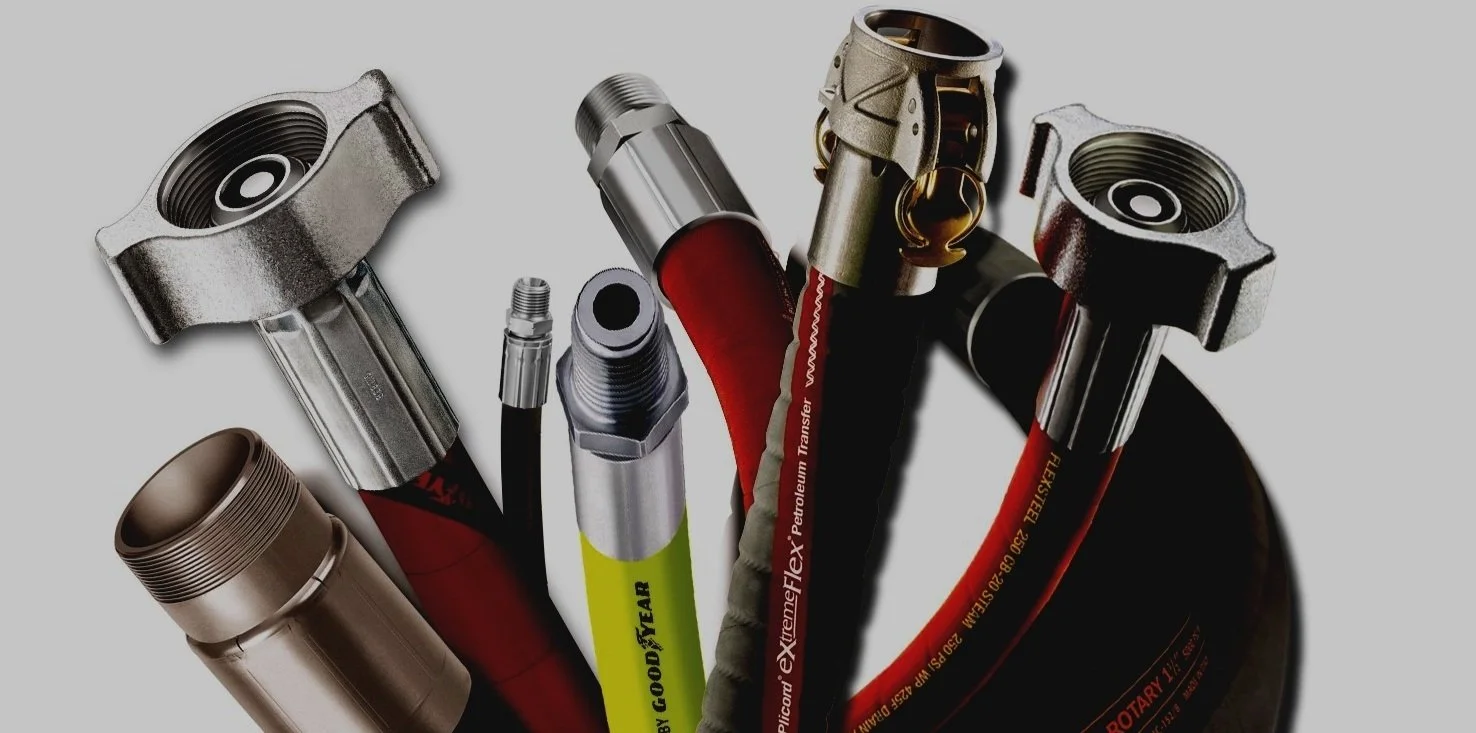
Imagem ilustrativa relacionada com os tubos de aspiração
- Certificações de fornecedores: Verificar as certificações do sector que garantem a qualidade e a segurança do produto.
- Comentários dos clientes: Procure críticas ou testemunhos para avaliar a fiabilidade do fornecedor e o desempenho do produto.
Passo 4: Comparar ofertas e preços de produtos
Quando tiver uma lista de fornecedores, compare as suas ofertas de produtos e estruturas de preços. Preste atenção aos diferentes tipos de mangueiras de sucção disponíveis, como PVC transparente, borracha ou mangueiras para climas frios, bem como às opções de montagem.
- Opções de compra a granel: Informe-se sobre descontos para encomendas em grandes quantidades, o que pode reduzir significativamente os seus custos globais.
- Garantia e garantia de satisfação: Certifique-se de que o fornecedor oferece garantias ou garantias de satisfação para proteger o seu investimento.
Passo 5: Negociar termos e condições
Envolver-se em discussões para negociar termos e condições favoráveis. Isto inclui preços, condições de pagamento, calendários de entrega e qualquer apoio pós-venda. Acordos claros ajudam a evitar mal-entendidos e asseguram um processo de aquisição sem problemas.
- Prazos de entrega: Confirmar os prazos de entrega para garantir a entrega atempada das suas mangueiras.
- Política de devolução: Compreender a política de devolução no caso de os produtos não corresponderem às suas expectativas.
Passo 6: Efetuar a encomenda e confirmar os detalhes
Depois de finalizar o fornecedor e as condições, faça a sua encomenda, assegurando-se de que todos os pormenores são confirmados por escrito. Verifique novamente as especificações, as quantidades e os prazos de entrega para evitar discrepâncias.
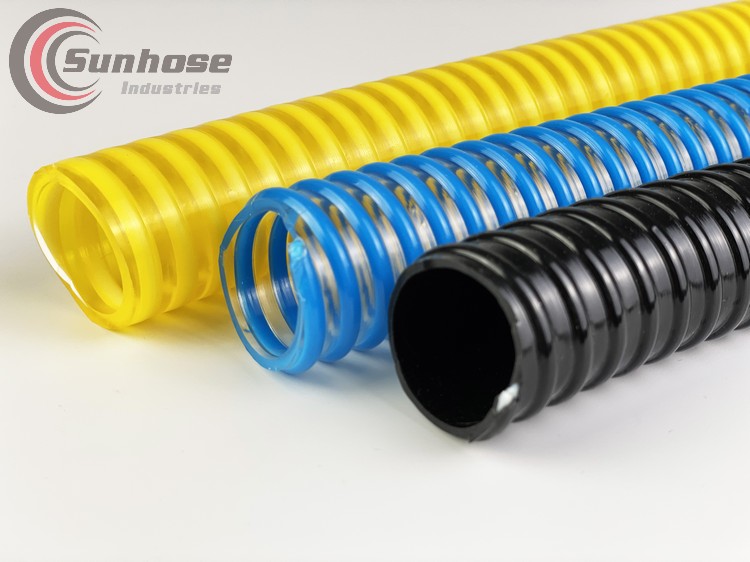
Imagem ilustrativa relacionada com os tubos de aspiração
Passo 7: Plano de controlo de qualidade e de testes
Quando as mangueiras forem entregues, implemente um processo de controlo de qualidade para testar o seu desempenho de acordo com as suas especificações. Esta etapa é fundamental para evitar problemas operacionais e garantir que as mangueiras tenham um desempenho eficaz nas aplicações pretendidas.
Seguindo esta lista de verificação, os compradores B2B podem navegar com confiança no processo de aprovisionamento de mangueiras de aspiração, conduzindo a aquisições bem sucedidas que satisfazem as suas exigências operacionais.
Análise abrangente de custos e preços para mangueiras de sucção Sourcing
Quais são os principais componentes de custo no fabrico de mangueiras de sucção?
Ao adquirir mangueiras de sucção, compreender a estrutura de custos é essencial para os compradores B2B. Os principais componentes de custo incluem:
-
Materiais: A escolha dos materiais tem um impacto significativo nos custos. Os materiais comuns para as mangueiras de aspiração são o PVC, a borracha e compostos especializados para aplicações específicas (por exemplo, resistência ao frio). Os materiais de qualidade superior conduzem geralmente a uma maior durabilidade e desempenho, mas também aumentam os custos.
-
Trabalho: Os custos de mão de obra podem variar consoante a região e a complexidade do processo de fabrico da mangueira. A mão de obra especializada é frequentemente necessária para mangueiras personalizadas ou especializadas, o que pode aumentar os custos de produção.
-
Despesas gerais de fabrico: Inclui os custos associados às operações das instalações, aos serviços públicos e à manutenção do equipamento. Processos de fabrico eficientes podem ajudar a reduzir estas despesas gerais, beneficiando tanto o fabricante como o comprador.
-
Ferramentas: O fabrico de ferramentas personalizadas para designs ou especificações específicos de mangueiras pode implicar custos iniciais adicionais. Os compradores devem considerar se o investimento em ferramentas personalizadas está de acordo com as suas necessidades a longo prazo.
-
Controlo de qualidade (CQ): Os processos rigorosos de controlo de qualidade são vitais para garantir que as mangueiras cumprem as normas da indústria e as especificações do cliente. Os custos associados aos testes e à certificação podem variar significativamente consoante as certificações exigidas (por exemplo, ISO, ASTM).
-
Logística: Os custos de envio, incluindo as taxas de frete e de manuseamento, podem variar consoante a distância, o modo de transporte e o volume da encomenda. Os Incoterms também desempenham um papel crucial na determinação de quem suporta estes custos.
-
Margem: Os fabricantes acrescentam normalmente uma margem para cobrir os seus custos e assegurar a rendibilidade. Esta margem pode variar consoante a procura do mercado, a concorrência e o valor percebido do produto.
Como é que os influenciadores de preços afectam os custos da mangueira de sucção?
Vários factores influenciam o preço dos tubos de sucção, que os compradores devem considerar:
-
Volume/MOQ: Os fornecedores oferecem frequentemente descontos para encomendas maiores, o que torna economicamente vantajoso para os compradores a compra a granel. Conhecer as quantidades mínimas de encomenda (MOQs) pode ajudar a negociar melhores preços.
-
Especificações e personalização: As mangueiras personalizadas, quer em termos de tamanho, material ou acessórios, podem implicar custos mais elevados. Uma comunicação clara das especificações pode ajudar os fornecedores a fornecer orçamentos exactos.
-
Qualidade e certificações: As mangueiras de qualidade superior que cumprem certificações específicas tendem a ter um preço mais elevado. Os compradores devem ponderar os benefícios a longo prazo do investimento em produtos certificados em relação aos custos iniciais.
-
Factores do fornecedor: A reputação e a fiabilidade do fornecedor podem influenciar o preço. Os fornecedores estabelecidos com um historial comprovado podem cobrar mais, mas muitas vezes oferecem melhor qualidade e serviço.
-
Incoterms: Compreender os Incoterms é crucial para as transacções internacionais. Termos como FOB (Free on Board) ou CIF (Cost, Insurance, and Freight) afectam os custos totais, incluindo o transporte e o seguro.
Que dicas do comprador podem aumentar a eficiência de custos no fornecimento de mangueiras de sucção?
Para conseguir uma boa relação custo-eficácia na aquisição de mangueiras de sucção, os compradores devem considerar as seguintes estratégias:
-
Negociação: Envolver os fornecedores em discussões sobre preços, especialmente para encomendas em massa. Aproveitar as ofertas competitivas de vários fornecedores para negociar melhores condições.
-
Custo total de propriedade (TCO): Avalie o custo total de propriedade, que inclui não só o preço de compra, mas também a manutenção, os custos operacionais e o potencial tempo de inatividade devido a falhas nas mangueiras. O investimento em mangueiras de maior qualidade pode reduzir o TCO ao longo do tempo.
-
Nuances de preços para compradores internacionais: Os compradores internacionais, especialmente de regiões como África, América do Sul e Médio Oriente, devem ter em conta as flutuações cambiais, os direitos de importação e os regulamentos locais que podem ter impacto nos preços. É essencial incluir estes elementos no orçamento global.
-
Pesquisar e comparar: Realize uma pesquisa exaustiva sobre vários fornecedores, comparando preços, qualidade e níveis de serviço. As análises e os estudos de casos podem fornecer informações sobre a fiabilidade do fornecedor.
-
Parcerias a longo prazo: A criação de uma relação de longo prazo com os fornecedores pode levar a melhores preços, melhor serviço e acesso a produtos ou descontos exclusivos.
Conclusão
Compreender a estrutura de custos e os factores que influenciam os preços das mangueiras de sucção é vital para os compradores B2B internacionais. Ao tirar partido destas informações, os compradores podem tomar decisões informadas, negociar eficazmente e, em última análise, conseguir um aprovisionamento económico adaptado às suas necessidades específicas. Os preços podem variar com base em vários factores, pelo que é aconselhável obter cotações de vários fornecedores e considerar todos os componentes de custo antes de tomar uma decisão de compra.
Análise de alternativas: Comparação das mangueiras de aspiração com outras soluções
Explorando alternativas para mangueiras de sucção: Uma comparação abrangente
No panorama dinâmico das aplicações industriais, as mangueiras de aspiração desempenham um papel vital na transferência de fluidos. No entanto, os compradores também devem considerar soluções alternativas que possam satisfazer as suas necessidades operacionais específicas. Esta secção apresenta uma comparação entre os tubos de aspiração e duas alternativas viáveis: bombas e sistemas de vácuo. Cada opção tem os seus pontos fortes e fracos únicos, que podem influenciar grandemente as decisões de compra.
| Aspeto de comparação | Mangueiras de aspiração | Bombas | Sistemas de vácuo |
|---|---|---|---|
| Desempenho | Eficiente para o transporte de líquidos e lamas; pode suportar várias viscosidades. | Caudais elevados, adequados para várias pressões e tipos de fluidos. | Excelente para remover ar ou gás; pode criar uma forte sucção para várias aplicações. |
| Custo | Custo inicial geralmente baixo; o preço varia consoante o material e o diâmetro. | Investimento inicial moderado a elevado; os custos operacionais variam em função da potência e da manutenção. | Custo inicial elevado; frequentemente requer instalação e manutenção especializadas. |
| Facilidade de implementação | Simples de configurar e utilizar; requer uma formação mínima. | Requer mais conhecimentos técnicos para a configuração; a complexidade varia consoante o tipo. | A instalação pode ser complexa e requer técnicos especializados para o seu funcionamento. |
| Manutenção | Manutenção reduzida; recomenda-se uma inspeção periódica. | Manutenção moderada; o tempo de vida da bomba varia consoante o tipo e a utilização. | Manutenção elevada; são essenciais verificações regulares dos vedantes, filtros e integridade geral do sistema. |
| Melhor caso de utilização | Ideal para aplicações de construção, agrícolas e de transferência de água. | Adequado para processos industriais, manuseamento de produtos químicos e aplicações de alta pressão. | Ideal para aplicações que exijam a remoção de ar, como em embalagens ou destilação a vácuo. |
Quais são os prós e os contras da utilização de bombas?
As bombas são uma alternativa predominante às mangueiras de sucção, particularmente em aplicações que exigem pressão e caudais mais elevados. Podem transferir eficazmente uma vasta gama de fluidos, incluindo materiais corrosivos e viscosos. As vantagens das bombas incluem a sua capacidade de manter uma pressão e um caudal consistentes, o que as torna ideais para processos industriais. No entanto, têm custos iniciais mais elevados e podem exigir uma manutenção significativa para garantir a longevidade e um desempenho ótimo.
Porquê considerar os sistemas de vácuo como uma alternativa?
Os sistemas de vácuo são excelentes em cenários onde a remoção de ar ou gás é crítica. São normalmente utilizados em embalagens, processamento de alimentos e destilação química. A principal vantagem dos sistemas de vácuo é a sua capacidade de criar um vácuo forte, que pode melhorar a qualidade do produto e o prazo de validade em aplicações de embalagem. No entanto, tendem a ter custos iniciais elevados e exigem conhecimentos especializados para a instalação e manutenção, o que pode não ser adequado para todas as empresas.
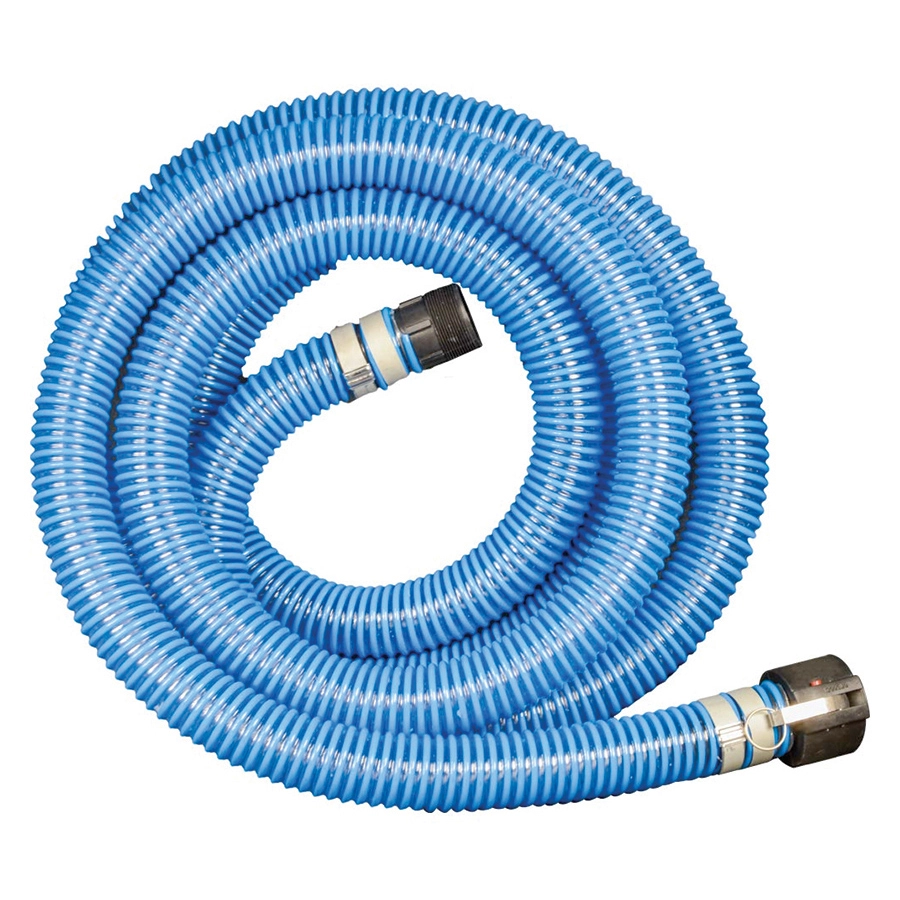
Imagem ilustrativa relacionada com os tubos de aspiração
Como é que os compradores B2B podem escolher a solução certa?
Ao selecionar a solução certa, os compradores B2B devem avaliar os seus requisitos operacionais específicos, incluindo o tipo de fluidos manuseados, os caudais necessários e as restrições orçamentais. As mangueiras de sucção oferecem uma opção económica e simples para muitas aplicações, particularmente na agricultura e na construção. Em contrapartida, as bombas e os sistemas de vácuo oferecem capacidades avançadas para tarefas especializadas, mas implicam custos e complexidade acrescidos. Em última análise, a escolha dependerá das necessidades específicas da operação, pelo que é essencial que os compradores efectuem uma análise exaustiva antes de tomarem uma decisão de compra.
Caraterísticas técnicas essenciais e terminologia comercial dos tubos de aspiração
Quais são as principais caraterísticas técnicas das mangueiras de sucção?
A compreensão das caraterísticas técnicas dos tubos de aspiração é essencial para tomar decisões de compra informadas. Seguem-se algumas especificações essenciais que devem ser consideradas:
1. Grau do material
O material utilizado nos tubos de aspiração afecta significativamente o seu desempenho e longevidade. Os materiais comuns incluem PVC (cloreto de polivinilo), borracha e poliuretano. As mangueiras de PVC são leves e flexíveis, o que as torna adequadas para aplicações gerais, enquanto as mangueiras de borracha são mais duráveis e resistentes à abrasão, ideais para ambientes industriais. Selecionar o material certo com base na aplicação pode reduzir os custos de substituição e o tempo de inatividade.
2. Diâmetro e comprimento
As mangueiras de aspiração têm vários diâmetros, normalmente entre 1 polegada e 12 polegadas. O diâmetro afecta o caudal; diâmetros maiores permitem o transporte simultâneo de mais fluido. As opções de comprimento também variam, sendo os comprimentos padrão frequentemente de 25 pés, 50 pés e 100 pés. É importante escolher o tamanho correto para garantir um desempenho ótimo e evitar perdas de pressão desnecessárias durante o funcionamento.
3. Pressão nominal
A classificação de pressão indica a pressão máxima que a mangueira pode suportar durante o funcionamento. Isso é crucial para aplicações que envolvem líquidos ou gases de alta pressão. Uma mangueira com uma classificação de pressão inadequada pode rebentar ou ter fugas, levando a reparações dispendiosas e a riscos de segurança. Certifique-se sempre de que a mangueira selecionada cumpre ou excede os requisitos de pressão da sua aplicação.
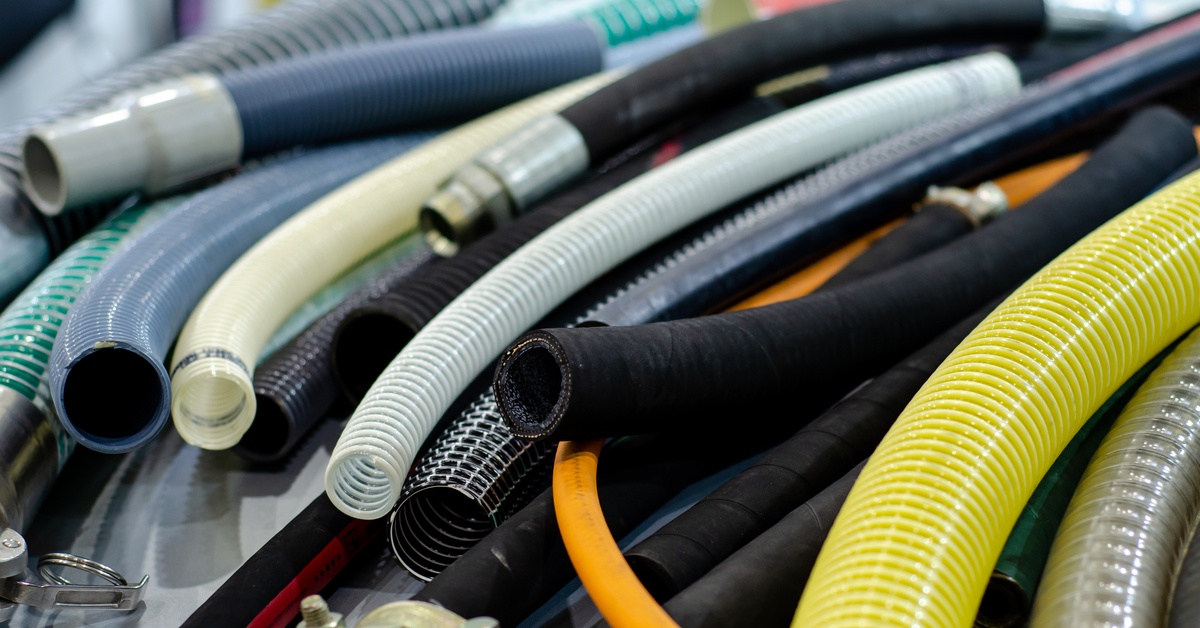
Imagem ilustrativa relacionada com os tubos de aspiração
4. Gama de temperaturas
A gama de temperaturas de funcionamento é outro fator crítico. Alguns tubos podem suportar temperaturas extremas, enquanto outros são concebidos para condições moderadas. Por exemplo, as mangueiras de aspiração para tempo frio são formuladas para permanecerem flexíveis a baixas temperaturas, garantindo fiabilidade durante os meses de inverno. Compreender os requisitos de temperatura da sua aplicação pode aumentar a durabilidade e a eficácia da mangueira.
5. Resistência química
As diferentes mangueiras de aspiração são formuladas para resistir a produtos químicos específicos. Se a sua aplicação envolver o transporte de substâncias corrosivas, é vital selecionar uma mangueira com resistência química adequada. Isto evita a degradação do material da mangueira e garante um funcionamento seguro. Consulte sempre as tabelas de compatibilidade química fornecidas pelos fabricantes ao efetuar a sua seleção.
Quais são os termos comerciais comuns relacionados com as mangueiras de sucção?
Familiarizar-se com o jargão do sector pode simplificar o processo de compra. Eis alguns termos comuns relacionados com os tubos de aspiração:
1. OEM (Fabricante de Equipamento Original)
Um OEM refere-se a uma empresa que produz peças ou equipamentos que podem ser comercializados por outro fabricante. No sector das mangueiras de aspiração, um fornecedor OEM pode fornecer mangueiras que satisfazem critérios de desempenho específicos definidos por uma marca. A compreensão das relações OEM pode ajudar os compradores a garantir a qualidade e a compatibilidade com os sistemas existentes.
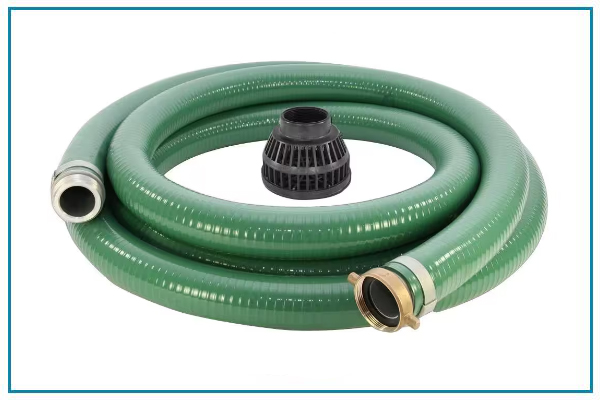
Imagem ilustrativa relacionada com os tubos de aspiração
2. MOQ (Quantidade mínima de encomenda)
O MOQ é o número mais pequeno de unidades que um fornecedor está disposto a vender. Este termo é crucial para os compradores B2B que precisam de gerir eficazmente os custos de inventário. Conhecer o MOQ ajuda as empresas a planear as suas encomendas e a evitar situações de excesso ou falta de stock.
3. RFQ (Pedido de Cotação)
Um pedido de cotação é um documento emitido por um comprador para solicitar preços e condições aos fornecedores. Normalmente, inclui especificações para os produtos desejados, como mangueiras de sucção. A apresentação de um pedido de cotação permite aos compradores comparar ofertas de vários fornecedores, garantindo que obtêm o melhor valor para o seu investimento.
4. Incoterms (Termos Comerciais Internacionais)
Os Incoterms são um conjunto de condições comerciais predefinidas publicadas pela Câmara de Comércio Internacional. Definem as responsabilidades dos compradores e vendedores relativamente ao transporte, seguro e tarifas. O conhecimento dos Incoterms é essencial para que os compradores internacionais compreendam as suas obrigações e riscos no processo de compra.
Ao compreenderem estas propriedades técnicas e termos comerciais, os compradores B2B podem tomar decisões informadas ao adquirirem mangueiras de sucção, optimizando as suas estratégias de aquisição e assegurando a eficiência operacional.
Navegar na dinâmica do mercado e nas tendências de abastecimento no sector das mangueiras de aspiração
Quais são as actuais dinâmicas de mercado e as principais tendências que afectam os tubos de sucção?
O mercado global de mangueiras de sucção é influenciado por vários factores-chave, incluindo a expansão das actividades industriais, o aumento da procura de soluções eficazes de gestão de fluidos e os avanços nas tecnologias de fabrico. À medida que sectores como a agricultura, a construção e o petróleo e gás continuam a crescer, a necessidade de tubos de sucção fiáveis intensificou-se. Particularmente em regiões como a África, a América do Sul, o Médio Oriente e a Europa, os compradores procuram cada vez mais soluções personalizadas que respondam a aplicações específicas, como a transferência de produtos químicos, a aspiração de água e a gestão de resíduos.
As tendências emergentes no sourcing B2B indicam uma mudança para plataformas digitais de aquisição, permitindo aos compradores comparar produtos, preços e fiabilidade dos fornecedores de forma mais eficiente. O comércio eletrónico e os mercados online estão a tornar-se ferramentas vitais para os compradores internacionais, permitindo-lhes adquirir mangueiras de sucção de diversos fornecedores com transparência nos preços e na qualidade. Além disso, a integração de tecnologias inteligentes, como as mangueiras com IoT que podem monitorizar o fluxo de fluidos e detetar fugas, está a ganhar força, melhorando a eficiência e a segurança operacionais.
O cenário competitivo está a evoluir à medida que os fabricantes se concentram na produção de mangueiras de sucção duráveis e de alta qualidade que cumprem as normas internacionais. Os compradores são encorajados a dar prioridade a fornecedores que ofereçam não só uma vasta gama de tamanhos e materiais, mas também um envio rápido e opções de compra flexíveis, como a compra ao pé ou ao rolo. Esta adaptabilidade é crucial para as empresas que operam em ambientes dinâmicos, onde as especificações dos projectos podem mudar rapidamente.
Como a sustentabilidade e o fornecimento ético estão moldando o mercado de mangueiras de sucção?
A sustentabilidade está a tornar-se uma pedra angular das estratégias de aquisição no sector das mangueiras de aspiração. O impacto ambiental dos processos de fabrico e os materiais utilizados na produção estão a ser analisados, levando os compradores a procurar fornecedores que dêem prioridade a práticas amigas do ambiente. Esta mudança é particularmente significativa em regiões que enfrentam regulamentações ambientais rigorosas, como a Europa, onde a conformidade com essas normas é essencial para a entrada no mercado.
O abastecimento ético é igualmente importante, uma vez que as empresas reconhecem cada vez mais o valor de manter cadeias de abastecimento transparentes. Os fornecedores que demonstram práticas laborais éticas e um aprovisionamento responsável de matérias-primas têm mais probabilidades de ganhar a confiança dos compradores. Certificações como a ISO 14001, que se centra em sistemas de gestão ambiental eficazes, e materiais recicláveis ou fabricados a partir de recursos sustentáveis estão a tornar-se factores-chave nas decisões de aquisição.
À medida que os compradores procuram alinhar as suas práticas de compra com os objectivos de responsabilidade social empresarial (RSE), há uma procura crescente de mangueiras de sucção feitas de materiais "verdes". Por exemplo, as mangueiras que utilizam PVC reciclado ou borracha natural não só reduzem o impacto ambiental como também apelam aos consumidores e às empresas que dão prioridade à sustentabilidade. Esta tendência está a remodelar o cenário competitivo, uma vez que os fornecedores que podem oferecer produtos sustentáveis e de origem ética terão uma vantagem distinta para atrair compradores internacionais.
Qual é a evolução do mercado de mangueiras de sucção?
O mercado das mangueiras de aspiração evoluiu significativamente ao longo das décadas, passando de mangueiras de borracha básicas para materiais avançados que aumentam a durabilidade e o desempenho. Inicialmente utilizadas sobretudo em aplicações agrícolas, as mangueiras de aspiração expandiram-se para vários sectores, incluindo a construção, a exploração mineira e a gestão de águas residuais.
A introdução de materiais sintéticos, como o PVC e o poliuretano, revolucionou a indústria ao oferecer opções leves, flexíveis e quimicamente resistentes. As inovações nos processos de fabrico, como as técnicas de extrusão e moldagem, permitiram aos fornecedores produzir mangueiras numa gama mais vasta de tamanhos e especificações, satisfazendo as diversas necessidades das indústrias modernas.
Com a diminuição das barreiras comerciais globais, o fornecimento internacional de mangueiras de sucção tornou-se mais comum. Os compradores podem agora aceder a uma gama mais vasta de produtos de fabricantes de todo o mundo, o que leva a uma maior concorrência e a melhores ofertas de produtos. Esta evolução sublinha a importância de se manter informado sobre a dinâmica do mercado e as tendências de fornecimento para tomar decisões estratégicas de compra que se alinhem com os objectivos da empresa.
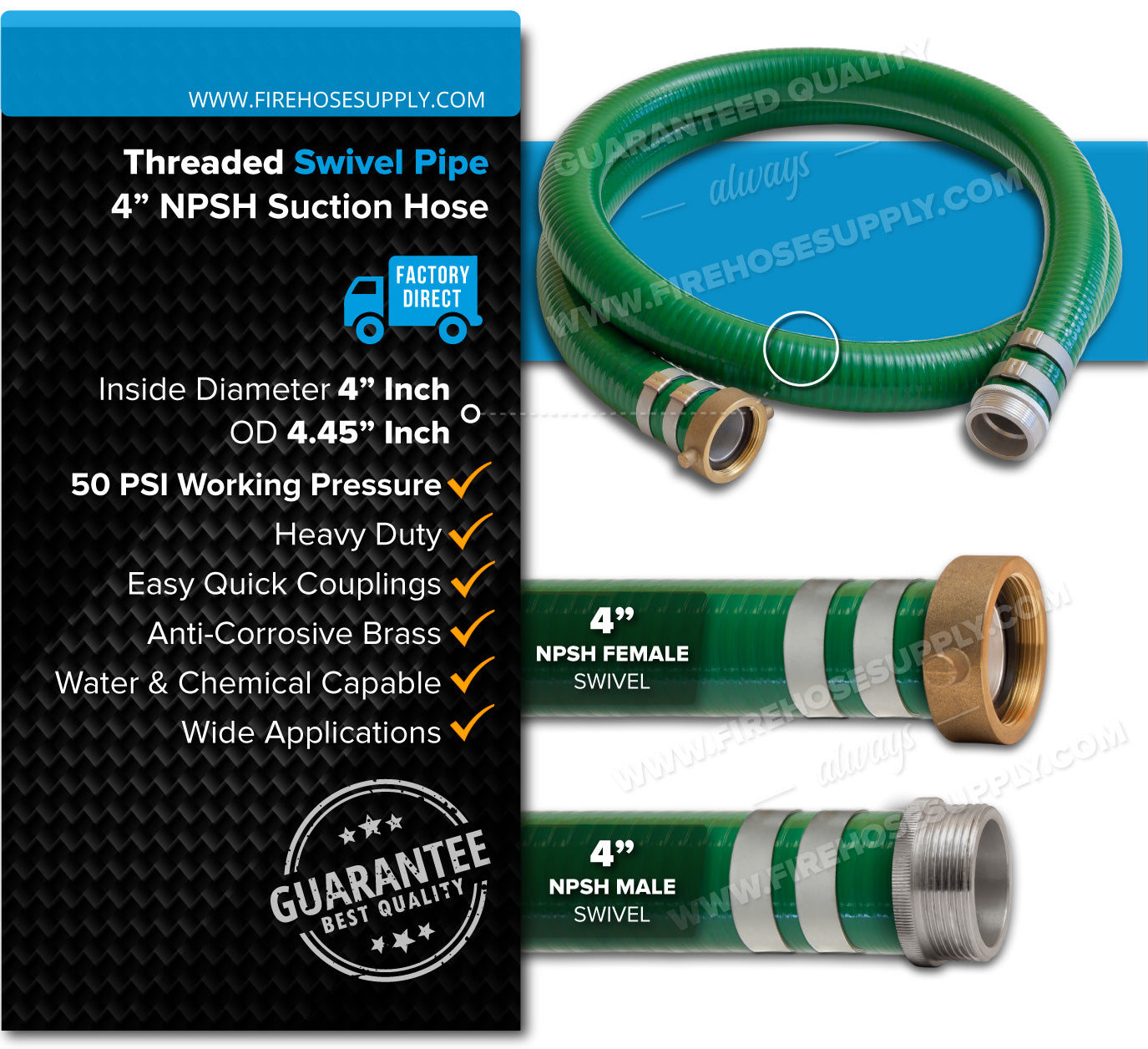
Imagem ilustrativa relacionada com os tubos de aspiração
Perguntas mais frequentes (FAQs) para compradores B2B de tubos de sucção
-
Como é que escolho a mangueira de aspiração correta para a minha aplicação?
A seleção do tubo de sucção adequado depende de vários factores, incluindo o tipo de fluido a ser transportado, as condições de temperatura e os requisitos específicos da aplicação. Considere o material da mangueira; o PVC é adequado para água, enquanto a borracha é preferida para aplicações industriais. Avalie o diâmetro e o comprimento da mangueira com base nos requisitos do seu sistema. Além disso, avalie as classificações de pressão e se a mangueira precisa de ser reforçada para ambientes de alta tensão. Consultar o seu fornecedor também pode fornecer informações valiosas adaptadas às suas necessidades específicas. -
Quais são as aplicações comuns dos tubos de aspiração?
As mangueiras de aspiração são amplamente utilizadas em vários sectores, incluindo a agricultura para irrigação, a construção para desidratação e o manuseamento de produtos químicos para transferir líquidos não corrosivos. São também essenciais na gestão de águas residuais e na manutenção de piscinas. Compreender os requisitos específicos da sua indústria ajudá-lo-á a selecionar o tipo certo de mangueira. Por exemplo, as mangueiras de borracha são ideais para ambientes robustos, enquanto as mangueiras de PVC são adequadas para aplicações mais leves, como a transferência de água. -
Que factores devo ter em conta ao escolher um fornecedor de mangueiras de aspiração?
Ao avaliar os potenciais fornecedores, dê prioridade à sua experiência no sector, à qualidade dos produtos e à reputação do serviço ao cliente. Solicite referências e estudos de caso para conhecer o seu historial. Além disso, avalie a sua conformidade com as normas e certificações internacionais relevantes para a sua região. Informe-se sobre as suas capacidades de produção, prazos de entrega e capacidade de satisfazer os seus requisitos específicos, como comprimentos ou acessórios personalizados. Um fornecedor fiável deve também oferecer uma comunicação clara e apoio durante todo o processo de compra. -
Quais são as quantidades mínimas de encomenda (MOQs) para os tubos de sucção?
Os MOQs podem variar significativamente entre fornecedores, influenciados pelo tipo de mangueira e pelas opções de personalização. Para tamanhos e materiais padrão, os MOQs podem começar com 50 pés ou um rolo. No entanto, as mangueiras personalizadas geralmente exigem pedidos mínimos mais altos devido aos custos de produção. Esclareça sempre o MOQ antecipadamente e considere as suas necessidades imediatas juntamente com os requisitos futuros para evitar o excesso de stock. Negociar com os fornecedores também pode resultar em termos flexíveis com base no seu volume de compras. -
Posso personalizar a minha encomenda de mangueiras de aspiração?
Sim, muitos fornecedores oferecem opções de personalização para mangueiras de sucção, incluindo comprimento, diâmetro e acessórios. Também pode escolher materiais específicos com base nas suas necessidades de aplicação, tais como mangueiras de clima frio para ambientes de baixa temperatura ou mangueiras reforçadas para aplicações de alta pressão. Certifique-se de que comunica claramente as suas especificações ao fornecedor e peça amostras, se possível. A personalização pode aumentar a eficiência e a eficácia das suas operações, tornando-a um investimento que vale a pena. -
Que condições de pagamento devo esperar ao comprar mangueiras de aspiração a nível internacional?
As condições de pagamento podem variar muito consoante o fornecedor e a natureza da transação. As opções mais comuns incluem o pagamento antecipado, o pagamento parcial após a confirmação da encomenda e o saldo aquando da expedição. Para transacções internacionais, considere métodos de pagamento seguros, como cartas de crédito, que proporcionam proteção adicional. Discuta os termos antecipadamente para garantir que estão de acordo com os seus processos financeiros e gestão do fluxo de caixa. A criação de uma boa relação com o fornecedor também pode facilitar condições mais favoráveis ao longo do tempo. -
Que medidas de garantia de qualidade devo procurar nos tubos de aspiração?
A garantia de qualidade é fundamental quando se adquirem mangueiras de aspiração, especialmente para aplicações industriais. Procure fornecedores que efectuem testes rigorosos aos seus produtos, incluindo testes de pressão e avaliações da integridade do material. Certificações como a conformidade com a ISO ou ASTM podem indicar a adesão às normas da indústria. Solicite documentação sobre os processos de controlo de qualidade e pergunte sobre garantias ou garantias de satisfação. Um fornecedor respeitável deve ser transparente sobre as suas práticas de garantia de qualidade, assegurando que recebe produtos fiáveis. -
Como posso garantir a logística e a entrega atempada da minha encomenda de mangueiras de sucção?
A logística atempada é crucial para manter os calendários dos projectos. Ao efetuar uma encomenda, discuta os prazos de entrega e as opções de envio com o seu fornecedor. Escolha fornecedores que ofereçam parceiros de expedição fiáveis e métodos de expedição rastreáveis. Além disso, considere fornecedores locais para reduzir os tempos e custos de envio. Planear com antecedência e fazer encomendas com bastante antecedência em relação às necessidades do seu projeto também pode ajudar a reduzir os atrasos. Estabelecer uma boa comunicação com o seu fornecedor durante todo o processo de expedição mantê-lo-á informado sobre quaisquer problemas potenciais.
Lista dos 7 principais fabricantes e fornecedores de mangueiras de sucção
1. Mangueira Factory Diret - Mangueiras de aspiração
Domínio: factorydirecthose.com
Registada: 2004 (21 anos)
Introdução: A Factory Diret Hose oferece uma variedade de mangueiras de sucção que variam de 1 "a 12" de diâmetro. As mangueiras estão disponíveis para compra a pé, por rolo ou como opções pré-montadas. Eles são adequados para aplicações de água, produtos químicos e ag-spray. O inventário inclui mangueiras de sucção transparentes, sólidas e para climas frios, garantindo envio e entrega rápidos. As opções incluem mangueiras de sucção de PVC transparente, gree...
2. DuroMax - Mangueira de aspiração da bomba de água
Domínio: duromaxpower.com
Registado: 2017 (8 anos)
Introdução: As mangueiras de sucção da bomba de água DuroMax possuem encaixes pin-lug, roscas NPT e estão disponíveis em vários tamanhos e comprimentos. Utilizam um reforço resistente para ajudar a evitar o colapso quando utilizadas em aplicações de sucção ou vácuo.
- Mangueira de sucção da bomba de água de 2 polegadas x 10 pés: Ideal para: DuroMax XPH0210S, Preço: $99.99
- Mangueira de sucção da bomba de água de 2 polegadas x 20 pés: Ideal para: DuroMax XPH0220S, Preço: ...
3. Jason Industrial - Aspiração de água em borracha
Domínio: loja de mangueiras.com
Registada: 2003 (22 anos)
Introdução: {"product_name": "Borracha de sucção de água", "part_number": "WS", "price_unit": "por POLEGADA", "variantes disponíveis": ["1-1/4 polegadas", "1-1/2 polegadas", "2 polegadas", "2-1/2 polegadas", "3 polegadas", "4 polegadas", "5 polegadas", "6 polegadas"], "fabricante": "Jason Industrial"}
4. Fornecimento de mangueiras de incêndio - Mangueiras de aspiração
Domínio: firehosesupply.com
Registada: 2012 (13 anos)
Introdução: As mangueiras de aspiração são concebidas para aplicações universais, adequadas para utilização em bombas e outros sistemas de entrada. Disponíveis em vários comprimentos e tamanhos. Os principais produtos incluem: Mangueira de sucção de 1″ polegada NPSH fêmea x NPSH macho ($145.95), Mangueira de sucção de 1″ polegada Camlock fêmea x Camlock macho ($145.95), Mangueira de sucção de 1-1/2″ polegada NPSH fêmea x NPSH macho ($148.48), Mangueira de sucção de 2″ polegada NPSH fêmea x NPSH macho ($153.34)...
5. Fire Hose Diret - Mangueira de sucção rígida em PVC
Domínio: firehosedirect.com
Registado: 2011 (14 anos)
Introdução: Mangueira de incêndio de sucção rígida em PVC
6. Hosecraft USA - Mangueiras de aspiração
Domínio: hosecraftusa.com
Registada: 2005 (20 anos)
Introdução: A Hosecraft USA oferece uma variedade de mangueiras de sucção adequadas a diferentes aplicações. Os principais produtos incluem: Mangueira de sucção de borracha RN1 (diâmetros de 1-1/2 ″ a 8 ″, -25F a 185F), Mangueira de sucção de borracha leve RN2 (diâmetros de 1 ″ a 6 ″, -30F a 140F), Mangueira de sucção de PVC PN1 (diâmetros de 1 ″ a 6 ″, 15F a 150F), Mangueira de sucção de PVC transparente PN2 (diâmetros de 1-1/2 ″ a 6 ″, -4F a 150F), Mangueira de sucção de plástico LS1 (1.5, 2, 3 ...
7. Mangueira McGill - Mangueira de sucção e descarga de água
Domínio: mcgillhose.com
Registada: 2000 (25 anos)
Introdução: A mangueira de sucção e descarga de água foi concebida para transferir água nas indústrias de construção, mineração, exploração de petróleo, agricultura e aluguer de equipamento. Construídas com tubos de borracha ou PVC reforçados com várias camadas de tecido ou arame para maior resistência e durabilidade. As mangueiras de sucção são mais rígidas para resistir ao colapso sob vácuo, enquanto as mangueiras de descarga são mais flexíveis para lidar com a pressão da água...
Conclusão sobre o aprovisionamento estratégico e perspectivas para os tubos de aspiração
Quais são as principais conclusões para os compradores B2B no fornecimento de mangueiras de sucção?
No cenário competitivo da aquisição de mangueiras de sucção, o fornecimento estratégico surge como um fator crítico de sucesso. Os compradores devem dar prioridade à qualidade, durabilidade e caraterísticas específicas da aplicação ao selecionar as mangueiras. Compreender a gama diversificada de opções - desde PVC transparente a mangueiras de borracha e para climas frios - permite às organizações alinhar as suas decisões de compra com as necessidades operacionais. Além disso, a aquisição a fabricantes de renome garante fiabilidade e pode aumentar a eficiência da cadeia de fornecimento.
Como é que o Sourcing Estratégico pode afetar o seu negócio?
O envolvimento no fornecimento estratégico não só optimiza os custos, como também promove relações de longo prazo com os fornecedores, cruciais para manter a continuidade do fornecimento. Ao aproveitar as opções de compra a granel e explorar várias configurações de montagem, as empresas podem obter poupanças significativas, assegurando simultaneamente que têm as mangueiras certas para os seus projectos. Isto é particularmente importante para as indústrias que operam em ambientes difíceis em África, na América do Sul, no Médio Oriente e na Europa.
Quais são as perspectivas futuras para a aquisição de mangueiras de sucção?
À medida que os mercados globais evoluem, a procura de tubos de sucção de alta qualidade continuará a crescer. Os compradores são encorajados a manterem-se à frente das tendências do sector e dos avanços tecnológicos que podem influenciar as ofertas de produtos. Agora é a altura de avaliar as suas estratégias de aprovisionamento e considerar parcerias que possam impulsionar a inovação e a eficiência. Aproveite a oportunidade para melhorar os seus processos de aquisição, garantindo que a sua empresa se mantém competitiva e bem equipada para enfrentar os desafios futuros.
Aviso importante e termos de utilização
⚠️ Declaração de exoneração de responsabilidade importante
As informações fornecidas neste guia, incluindo o conteúdo relativo a fabricantes, especificações técnicas e análises de mercado, destinam-se apenas a fins informativos e educativos. Não constitui aconselhamento profissional em matéria de aquisições, aconselhamento financeiro ou aconselhamento jurídico.
Embora tenhamos feito todos os esforços para garantir a exatidão e a atualidade das informações, não somos responsáveis por quaisquer erros, omissões ou informações desactualizadas. As condições de mercado, os detalhes da empresa e as normas técnicas estão sujeitos a alterações.
Os compradores B2B devem efetuar a sua própria diligência prévia independente e exaustiva antes de tomar qualquer decisão de compra. Isto inclui contactar diretamente os fornecedores, verificar as certificações, pedir amostras e procurar aconselhamento profissional. O risco de confiar em qualquer informação contida neste guia é suportado exclusivamente pelo leitor.

